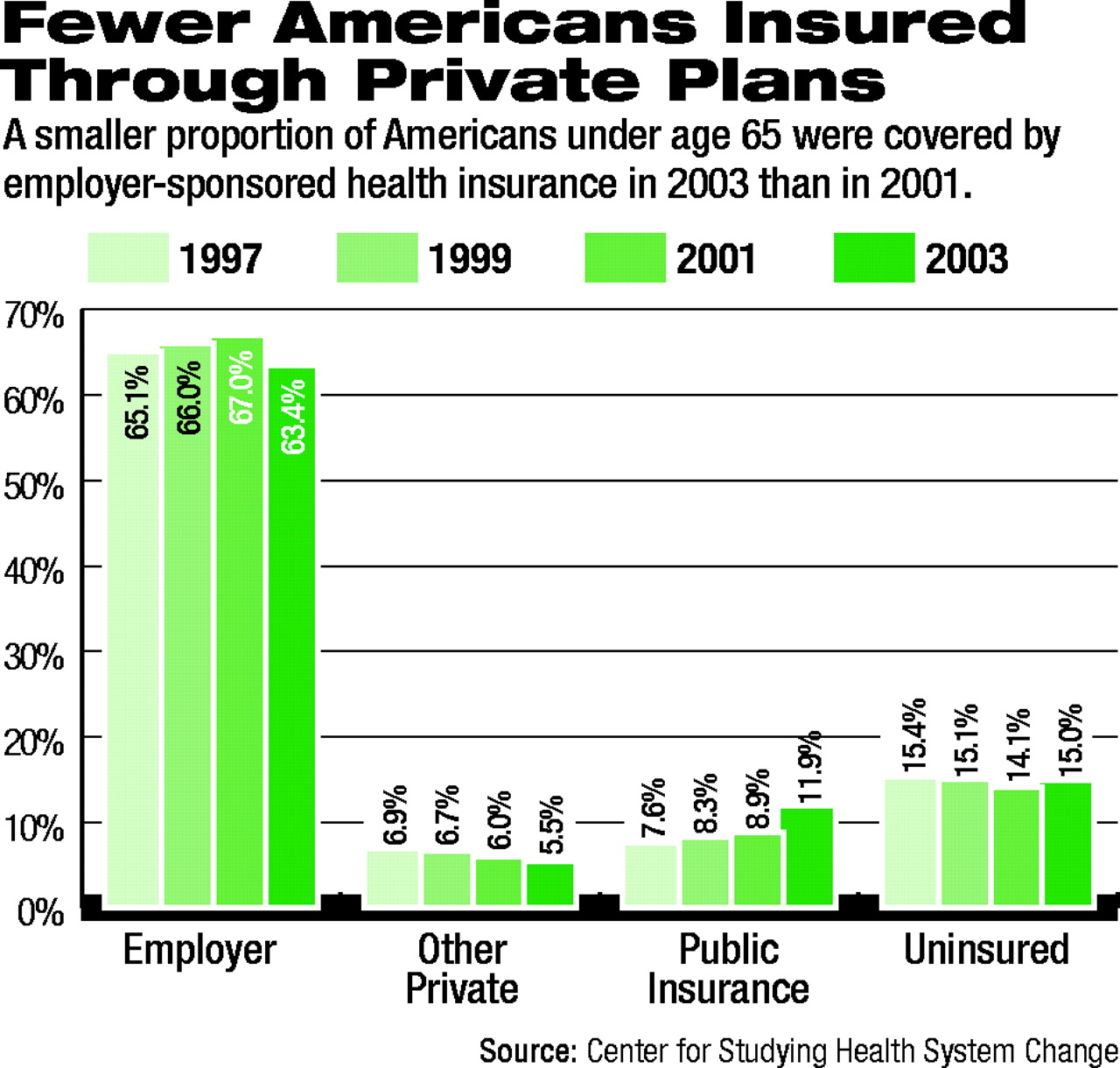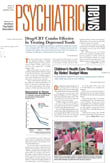The proportion of Americans under age 65 covered by employer-sponsored health insurance fell from 67 percent to 63 percent between 2001 and 2003, according to an issue brief released by the Center for Studying Health System Change (HSC) in August.
Authors Bradley C. Strunk and James D. Reschovsky wrote, “Expansion of public health insurance—including Medicaid and the State Children's Health Insurance Program (SCHIP)—forestalled a significant increase in the number of uninsured, as the proportion of the under-65 population enrolled in public coverage increased from 9 percent to 12 percent.”
The HSC is a nonpartisan health policy research organization, which is funded by the Robert Wood Johnson Foundation.
The source of these data is the HSC Community Tracking Study Household Survey, a nationally representative telephone survey of the civilian, noninstitutionalized population, which the HSC has conducted annually (except for 2002) since 1996-97.
According to the report, employer-sponsored insurance declined for all age groups, but the decline in coverage was particularly pronounced for young adults aged 19 to 39 and children aged 18 and under.
Between 2001 and 2003, the proportion of young adults with employer coverage declined from 64.9 percent to 59.4 percent. The respective figures for children are 63.4 percent to 59.5 percent.
Changes in insurance coverage between 2001 and 2003 affected low-income people disproportionately.
Among the under-65 population with family income less than 200 percent of the federal poverty level (FPL) ($36,800 for a family of four in 2003), the proportion with employer coverage declined from 37.4 percent to 32.5 percent.
Families with incomes between 200 percent and 399 percent of FPL experienced a decline in coverage from 74.4 percent in 2001 to 72.2 percent in 2003.
Despite the fact that health insurance premiums and copays have increased, the change in the percentage of eligible workers who opted for coverage is not statistically significant. The proportion of people in working families who accepted an offer of employer coverage declined from 93.3 percent in 2001 to 92.4 percent in 2003.
Instead, the authors attribute the drop in employer coverage to a decline in the likelihood of people being in a working family and to a“ slight” decrease in the willingness of employers to offer insurance.
They pointed out that there was a “notable drop in the proportion of the population in a family with at least one worker: 84.2 percent of the under-65 population was in a working family in 2001 compared with 81.4 percent in 2003.”
Strunk and Reschovsky noted that, “Public insurance clearly picked up the slack as the United States moved through a recession and jobless recovery, and employer coverage declined.”
They particularly tout the impact of SCHIP as being “remarkably successful in providing a safety net to children who might otherwise be uninsured.”
Between 2001 and 2003, the proportion of low-income children enrolled in public insurance programs grew from 37.9 percent to 49.3 percent, representing an increase of almost 5 million children.
They noted, however, that “public insurance is threatened” by state budget problems and predict that the greatest impact on enrollment likely will occur in 2004.
The Kaiser Commission on Medicaid and the Uninsured recently released reports showing that national enrollment in SCHIP had declined in the second half of 2003 for the first time since the program was enacted in 1997. Much of that decline was attributed to policy changes in Texas, but other states have enacted cost-cutting measures. (See related stories on
pages 1 and
6.)
“Trends in U.S. Health Insurance Coverage” is posted online at<www.hschange.org/CONTENT/694/>.▪

